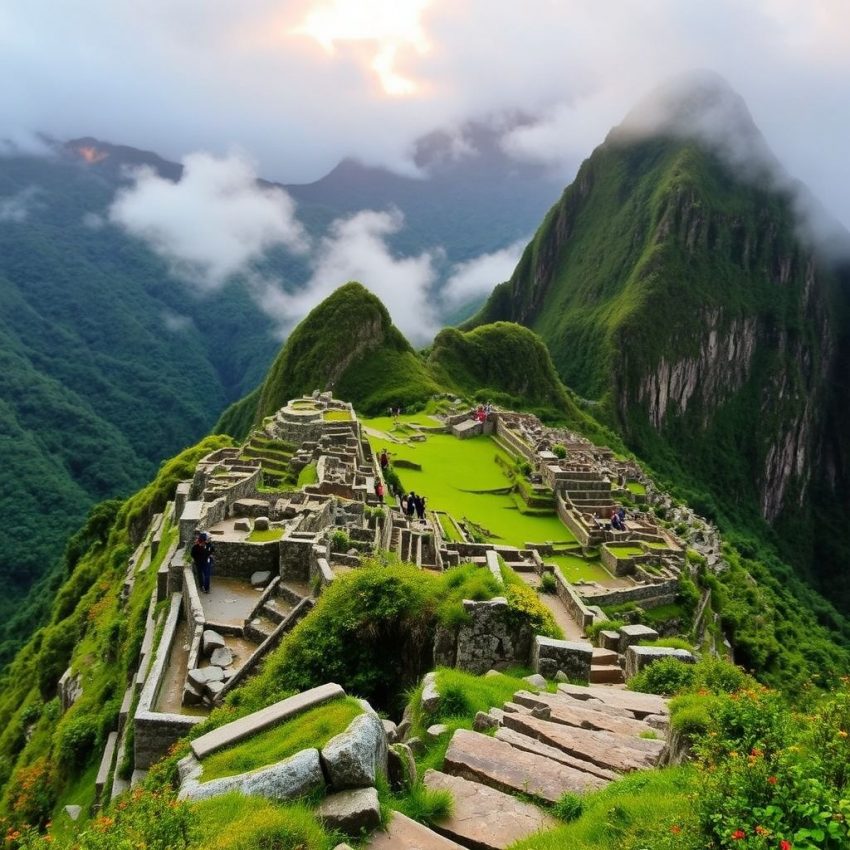Conquering the Inca Trail: Just How Hard Is It, Really?
The Inca Trail to Machu Picchu. It's a name that evokes images of ancient ruins, breathtaking mountain vistas, and a challenging but rewarding journey. But just how challenging is it? We're tackling the most frequently asked questions about the Inca Trail's difficulty, so you can determine if this iconic trek is right for you.
Is the Inca Trail difficult?
The short answer? Yes, it's considered a moderately challenging trek. It's not Mount Everest, but it's not a walk in the park either. The difficulty stems from several factors:
- Altitude: The trail reaches a maximum altitude of 4,200m (13,800ft) at Dead Woman's Pass. Altitude sickness can affect anyone, regardless of fitness level.
- Terrain: The trail is uneven, rocky, and features steep ascents and descents, including thousands of Inca stairs.
- Distance: The classic 4-day/3-night trek covers approximately 43km (27 miles).
- Weather: Conditions can change rapidly, from scorching sun to freezing rain.
What kind of fitness level do I need?
You don't need to be an ultra-marathon runner, but a good level of fitness is essential. We recommend regular aerobic exercise like hiking, running, or cycling in the months leading up to your trek. Practicing hiking with a weighted backpack on hilly terrain is especially beneficial.
How can I prepare for the altitude?
Acclimatizing to the altitude is crucial. Spend at least two days in Cusco (3,400m) or the Sacred Valley before starting the trek. This allows your body to adjust to the thinner air. Staying hydrated and avoiding alcohol and excessive caffeine also helps. Consider coca tea, a traditional remedy for altitude sickness.
Do I need to hire a porter?
While not mandatory (except for the Classic Inca Trail which requires licensed operators including porters for camping equipment), hiring a porter is highly recommended. They carry your gear, allowing you to focus on enjoying the trek. It's also a great way to support the local economy.
What should I pack?
Packing light is key. Essential items include:
- Sturdy hiking boots: Broken-in and waterproof are a must.
- Layers of clothing: Prepare for all weather conditions.
- Rain gear: A waterproof jacket and pants are essential.
- Sleeping bag: Rated for sub-zero temperatures.
- Water bottles or a hydration reservoir: Staying hydrated is vital.
- Sunscreen, hat, and sunglasses: Protect yourself from the strong Andean sun.
- Headlamp or flashlight: For navigating campsites at night.
- Trekking poles: Highly recommended for stability on uneven terrain.
What about the permits?
Permits for the Inca Trail are limited and sell out months in advance, especially during peak season (May-September). Booking well in advance through a licensed tour operator is crucial.
Is the Inca Trail worth it?
Absolutely! Despite the challenges, the Inca Trail offers an unforgettable experience. Trekking through stunning landscapes, exploring ancient Inca sites, and finally arriving at the majestic Machu Picchu is a truly rewarding adventure.
So, is the Inca Trail right for you?
If you're reasonably fit, prepared to train, and excited for a challenging but incredible adventure, then the answer is likely yes! With proper preparation and a positive attitude, conquering the Inca Trail will be an experience you'll cherish for a lifetime. Don't hesitate to contact a reputable tour operator to discuss your options and begin planning your journey to Machu Picchu.
Don’t miss out on this exclusive deal, specially curated for our readers! Unlocking the Future of Home Automation with Hubitat C8
This page includes affiliate links. If you make a qualifying purchase through these links, I may earn a commission at no extra cost to you. For more details, please refer to the disclaimer page. disclaimer page.

